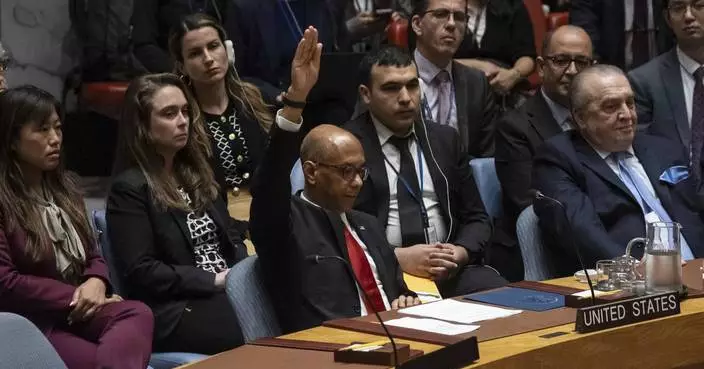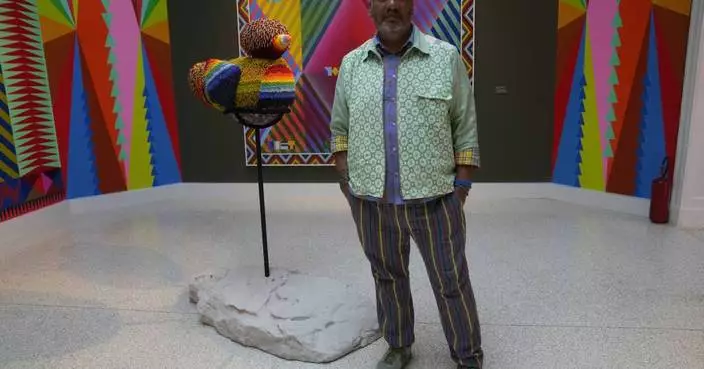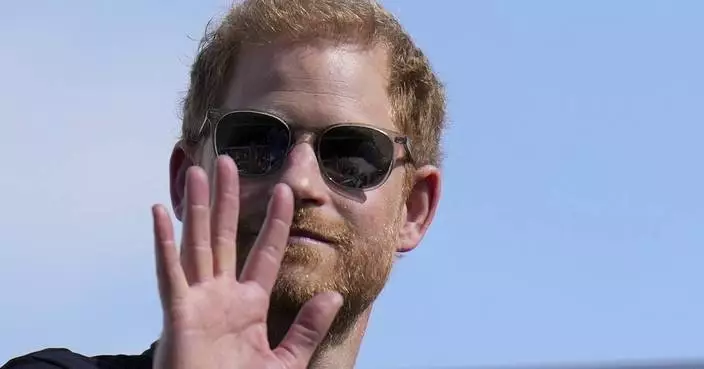Tommy and Laura Thomson always knew they wanted to adopt a child; the question was, from where? The answer came during their first trip to China almost a decade ago.
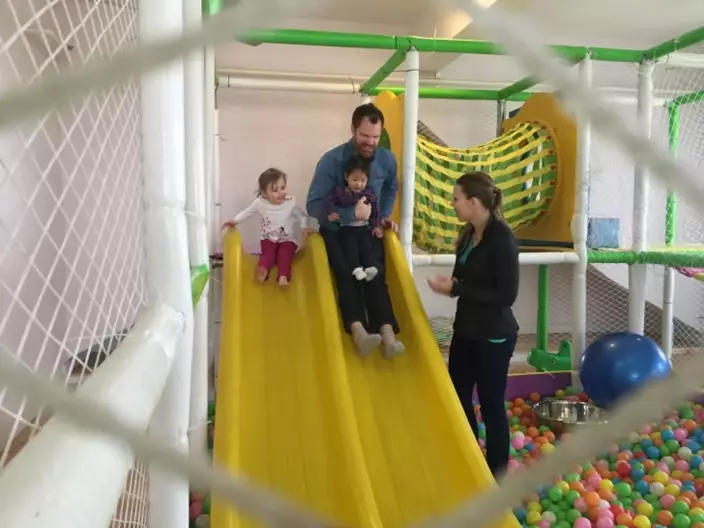
International adoptions are becoming more difficult in China./ CGTN Photo
As Tommy explains: “I think, before we came to China we would have considered other countries near the US, perhaps a Hispanic culture, myself having lived in Mexico and having always had a strong desire to go to South America, but instead we fell in love with China, and we decided if we want to adopt we would like to continue to have a relationship, therefore adopting a child from there.”
And so they started the adoption process. In order to immerse themselves in the home culture of their prospective child, the couple moved back to China with their young daughter, Ruby, in May 2016. They planned to spend the next 18 months helping out at a local NGO that takes in orphans with disabilities.

CGTN Photo
Once approved for adoption, they were matched up with a little girl originally from Fujian Province. But before they could proceed, they had to go through an emotionally-taxing period during which the authorities verified that her parents would not come forward to claim the girl.
Laura recounts the inner turmoil they faced during this time of uncertainty: “The original orphanage in which she was found have to advertise the child to the public of that area, so they can speak up and claim their child before they’re internationally adopted. And it actually is two or three months. Once that window is closed, doesn’t matter, nobody can speak up, they’re now available. So that was quite stressful. It was a really emotional time of ‘Well, if their family wants them, please take her… but we want her, too...’ But nobody stepped up to claim her, and so then she was available for international adoption. It was a while before she was given to us and matched with us, but at least she was available.”
China has long been a country of interest for US families eager to adopt, with almost half of all international adoptees in the US during 2016 having been born here. Following a steep fall in the number over the past decade, only around 5,300 Chinese children were adopted by Americans in 2016. This decline, to merely a quarter of the figure in 2004, is attributed to changes in the adoption laws, which have become increasingly stringent – notably in China. At the end of July 2017, the China Centre for Children’s Welfare and Adoption released an updated list of requirements for potential adoptive parents, which excluded people suffering from depression or epilepsy, and those with a Body Mass Index of over 40.
From the orphan’s side, there is a further threat to a successful adoption, in the form a ticking clock. According to Chinese adoption laws, on the children’s 14th birthday they are no longer eligible for adoption.
Speaking on behalf of her NGO, Laura says: “There is a rush for some of our older children because it does take a while to do an international adoption. You’re hitting 12; you’re hitting 13, we really need to get going on this. We’ve had children that have had a family matched but whatever the regulations, the family couldn’t get here in time and it fell through, and they were no longer adoptable.”
In Laura and Tommy’s case, the process took almost two years, but they finally got their happy ending. They have packed their suitcases and returned to the US with their daughter, but with a resolve to keep the connection with her country of birth, alive. So, this is a “See you soon” rather than a final goodbye.
TOKYO (AP) — The American envoy to the United Nations called Friday for countries armed with atomic weapons to pursue nuclear disarmament as she visited the atomic bomb museum in Nagasaki, Japan.
Linda Thomas-Greenfield, who became the first U.S. cabinet member to visit Nagasaki, stressed the importance of dialogue and diplomacy amid a growing nuclear threat in the region.
“We must continue to work together to create an environment for nuclear disarmament. We must continue to prevent the spread of nuclear weapons in every corner of the world,” she said after a tour of the atomic bomb museum.
“For those of us who already have those weapons, we must pursue arms control. We can and must work to ensure that Nagasaki is the last place to ever experience the horror of nuclear weapons,” she added, standing in front of colorful hanging origami cranes, a symbol of peace.
The United States dropped the world’s first atomic bomb on Hiroshima on Aug. 6, 1945, destroying the city and killing 140,000 people. A second attack three days later on Nagasaki killed 70,000 more people. Japan surrendered on Aug. 15, ending World War II and its nearly half-century of aggression in Asia.
Nagasaki Gov. Kengo Oishi said in a statement that he believed Thomas-Greenfield's visit and her first-person experience at the museum “will be a strong message in promoting momentum of nuclear disarmament for the international society at a time the world faces a severe environment surrounding atomic weapons.”
Oishi said he conveyed to the ambassador the increasingly important role of Nagasaki and Hiroshima in emphasizing the need of nuclear disarmament.
Thomas-Greenfield's visit to Japan comes on the heels of Prime Minister Fumio Kishida's official visit to the United States last week and is aimed at deepening Washington's trilateral ties with Tokyo and Seoul. During her visit to South Korea earlier this week, she held talks with South Korean officials, met with defectors from North Korea and visited the demilitarized zone.
The ambassador said the United States is looking into setting up a new mechanism for monitoring North Korea's nuclear weapons program. Russia and China have thwarted U.S.-led efforts to step up U.N. sanctions on North Korea over its ballistic missile testing since 2022, underscoring a deepening divide between permanent Security Council members over Russia’s war on Ukraine.
She said it would be “optimal” to launch the new system next month, though it is uncertain if that is possible.
The U.N. Security Council established a committee to monitor sanctions, and the mandate for its panel of experts to investigate violations had been renewed for 14 years until last month, when Russia vetoed another renewal.
In its most recent report, the panel of experts said it is investigating 58 suspected North Korean cyberattacks between 2017 and 2023 valued at approximately $3 billion, with the money reportedly being used to help fund its weapons development.
The United States, Japan and South Korea have been deepening security ties amid growing tension in the region from North Korea and China.
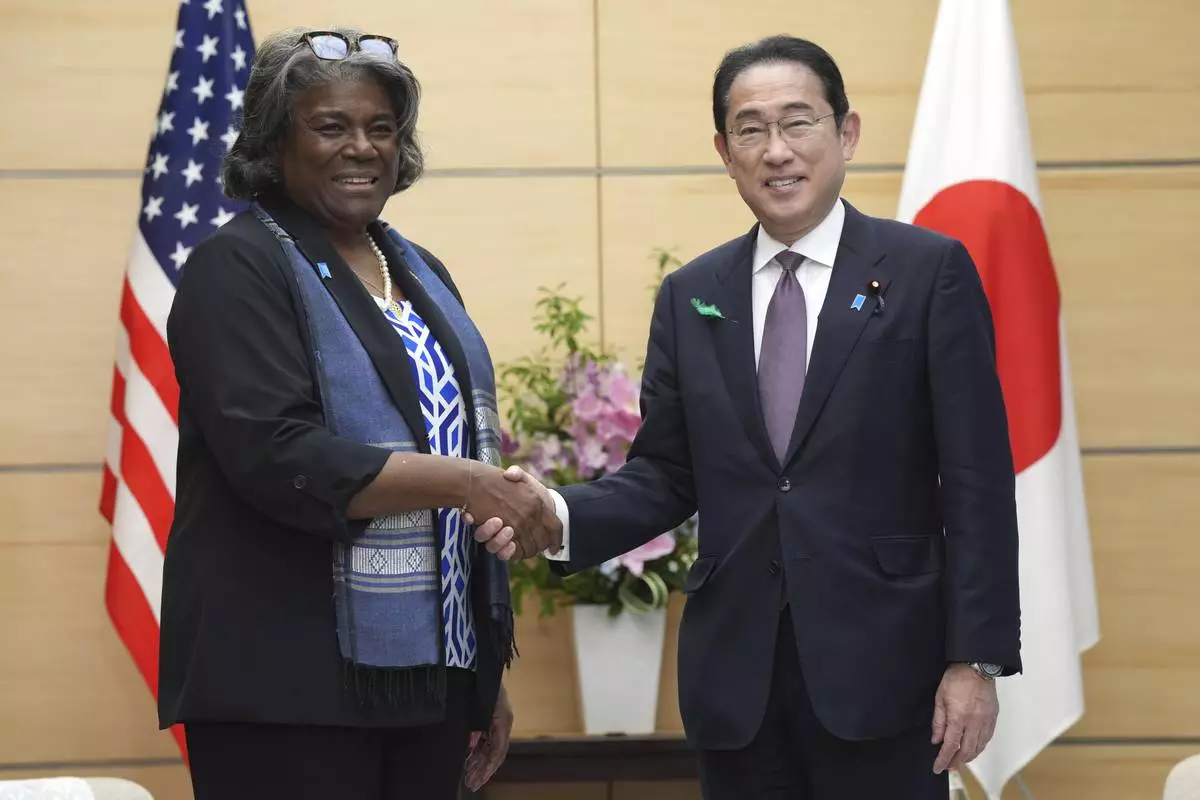
U.S. Ambassador to United Nations Linda Thomas-Greenfield, left, and Japan's Prime Minister Fumio Kishida, right, shake hands during a meeting Friday, April 19, 2024, at prime minister's office in Tokyo. (AP Photo/Eugene Hoshiko, Pool)

U.S. Ambassador to United Nations Linda Thomas-Greenfield, left, and Japan's Prime Minister Fumio Kishida, right, shake hands during a meeting Friday, April 19, 2024, at prime minister's office in Tokyo. (AP Photo/Eugene Hoshiko, Pool)
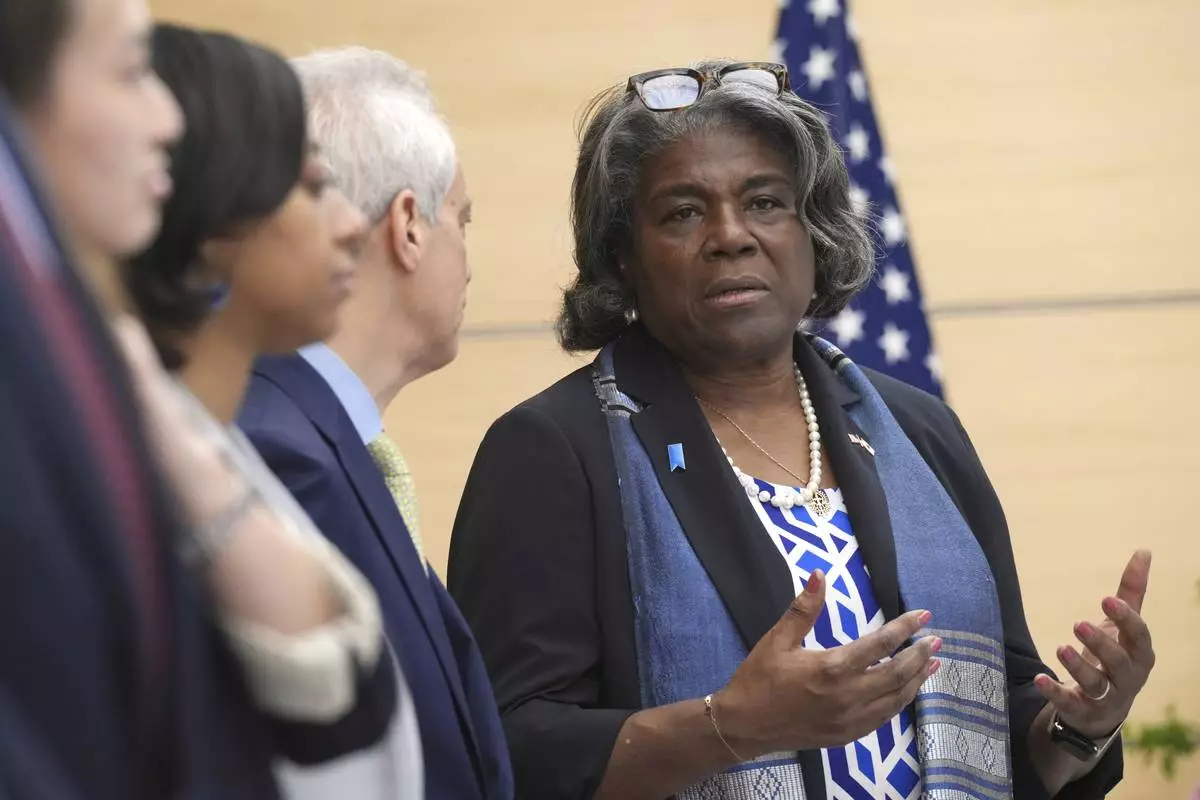
U.S. Ambassador to United Nations Linda Thomas-Greenfield, right, speaks to Rahm Emanuel, U.S. Ambassador to Japan, second right, as they wait for a meeting with Japan's Prime Minister Fumio Kishida Friday, April 19, 2024, at prime minister's office in Tokyo. (AP Photo/Eugene Hoshiko, Pool)
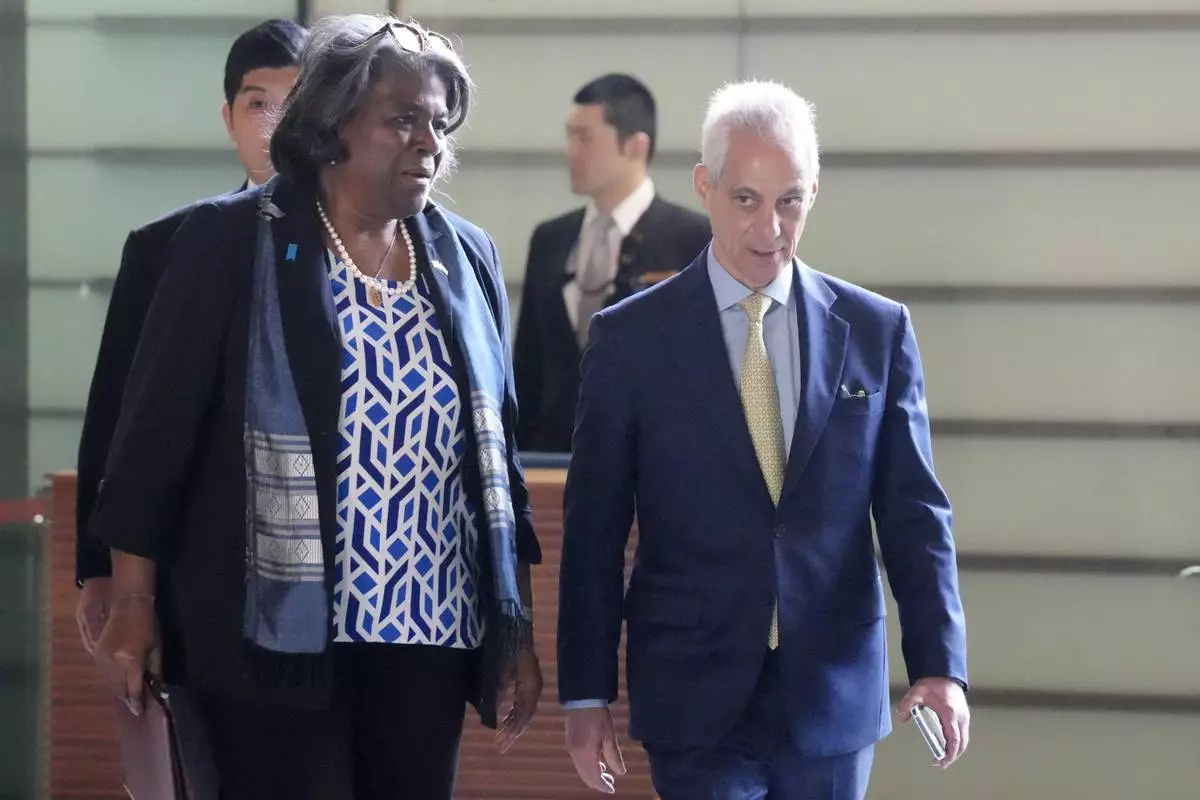
U.S. Ambassador to United Nations Linda Thomas-Greenfield, left, and Rahm Emanuel, U.S. Ambassador to Japan, right, walk to meet Japan's Prime Minister Fumio Kishida Friday, April 19, 2024, at prime minister's office in Tokyo. (AP Photo/Eugene Hoshiko, Pool)
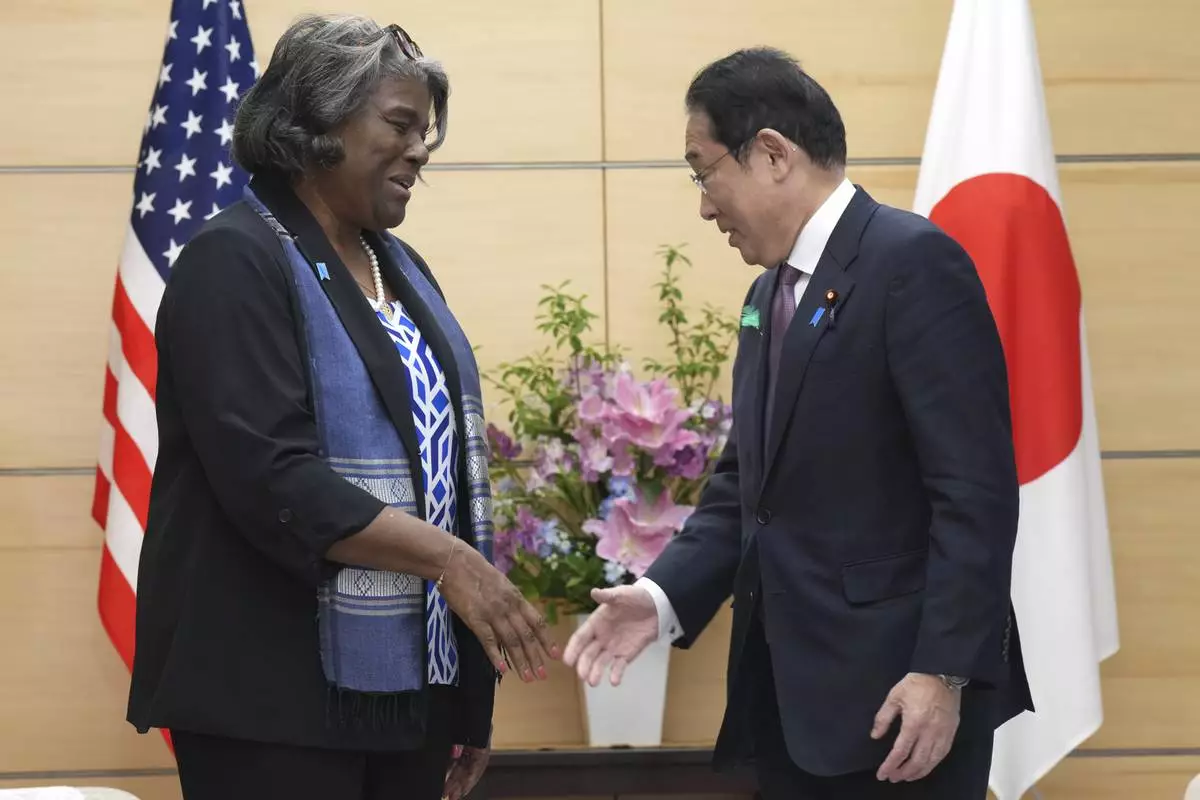
U.S. Ambassador to United Nations Linda Thomas-Greenfield, left, and Japan's Prime Minister Fumio Kishida, right, talk prior to a meeting Friday, April 19, 2024, at prime minister's office in Tokyo. (AP Photo/Eugene Hoshiko, Pool)
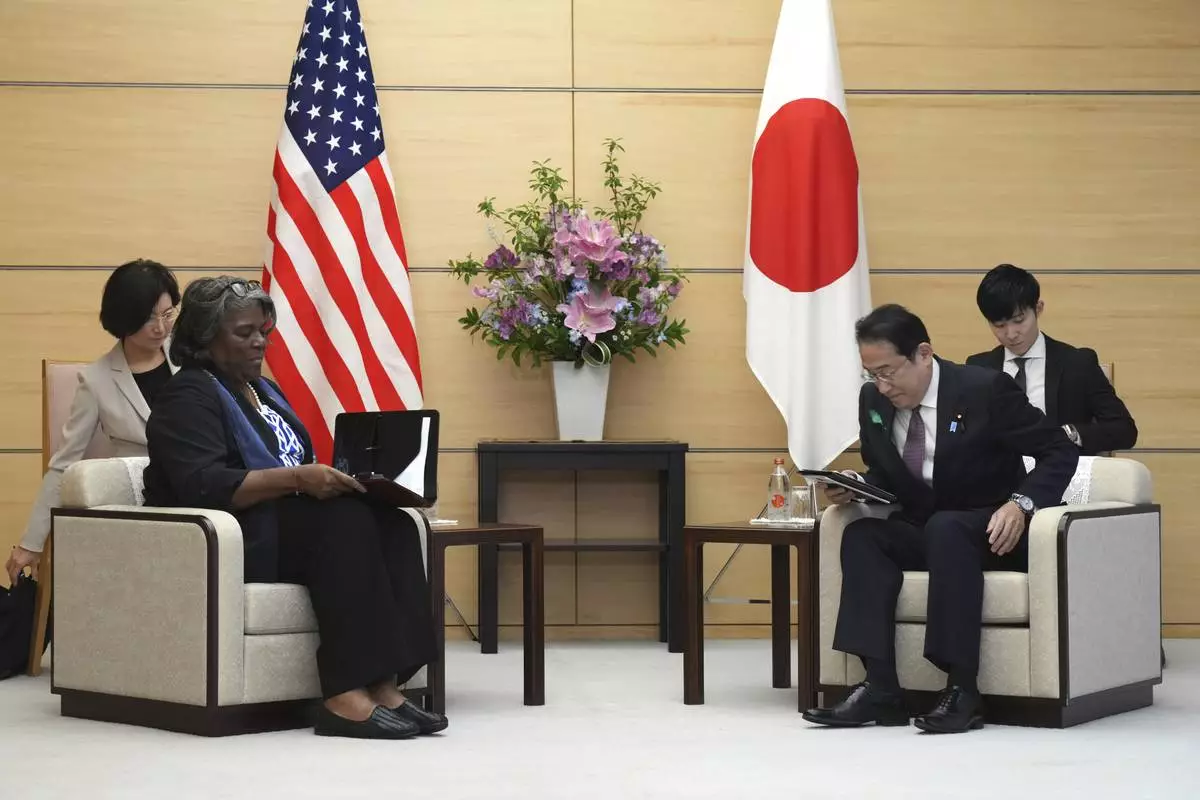
U.S. Ambassador to United Nations Linda Thomas-Greenfield, left, and Japan's Prime Minister Fumio Kishida, right, prepare to talk during a meeting Friday, April 19, 2024, at prime minister's office in Tokyo. (AP Photo/Eugene Hoshiko, Pool)












